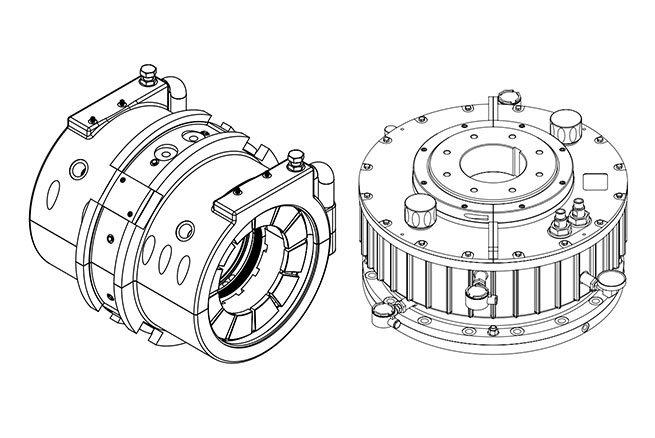In order to avoid overheating of the gearbox bearings, what temperature conditions do we need to ensure around the gearbox?
To avoid
gearbox bearings from overheating, we need to take a series of preventive measures. First, we should make sure that the temperature around the gearbox is not too high. The gearbox is generally located at the bottom of the vehicle and is easily affected by the heat from the engine exhaust pipe. To solve this problem, we can take some measures to reduce the temperature around the gearbox.
The first step is to regularly check the operation of the transmission cooler to make sure it is working properly. The transmission cooler is responsible for dissipating heat and reducing the temperature of the transmission through coolant or air cooling. If there is a problem with the cooler, such as blockage or leakage, it will affect the cooling effect of the transmission. Therefore, we should regularly check the operation of the cooler to ensure that it is working properly.
If the vehicle is often used in high-temperature environments, we can consider adding a transmission cooler or using high-temperature oil. Typically, a vehicle's original transmission cooler is designed to handle normal use. However, if we often drive for long periods of time in high temperature environments, the original cooler may not be able to meet the needs. At this time, we can consider adding an additional transmission cooler to increase the effect of the cooling system.
We can also consider using high temperature oil to protect the gearbox. High-temperature oils generally have higher oil temperature tolerance and can better withstand the impact of high-temperature environments on the gearbox. This oil has a higher viscosity index and can maintain stable lubricity at high temperatures. Therefore, if we often use the vehicle in a high-temperature environment, we can consider using high-temperature oil to improve the heat resistance of the gearbox.
To avoid overheating of the gearbox bearings, we need to ensure that the temperature around the gearbox is not too high. It is very important to check the operation of the transmission cooler regularly to ensure that it is working properly. If the vehicle is frequently used in high-temperature environments, you may consider adding a transmission cooler or using high-temperature oil to improve the heat resistance of the transmission. Through these measures, we can effectively protect the gearbox and extend its service life.
In order to extend the life of the gearbox bearings, do you need to avoid frequent and violent driving?
In order to extend the life of the
gearbox bearings, it is important to avoid intense driving such as frequent sharp turns and sudden braking. These intense driving habits will put huge stress on the gearbox bearings, shortening their lifespan. Therefore, driving smoothly and avoiding overloading are also very important, which play a positive role in extending the life of the bearings.
Frequent sharp turns and sudden braking will put greater stress on the gearbox bearings. When turning sharply, the vehicle will experience large lateral forces, which will put extra pressure on the transmission bearings, resulting in increased wear. Similarly, the inertia of the vehicle during sudden braking will cause the gearbox bearings to suffer a greater impact force, which will also accelerate the damage of the bearings. Therefore, avoiding frequent sharp turns and sudden braking is an important measure to protect the gearbox bearings.
Smooth driving is also critical to extending the life of your transmission bearings. Smooth driving mainly includes smooth starting, smooth acceleration and smooth deceleration. Smooth starting and acceleration can reduce the force impact on the bearings and avoid damage to the bearings caused by excessive speed and rotational speed. Smooth deceleration can reduce the impact force and reduce the pressure on the bearing, thereby protecting the bearing. Therefore, smooth driving is very important to extend the service life of the transmission bearings.
Avoiding overloading is also an important measure to protect the gearbox bearings. Overloading will cause the gearbox to bear excessive load, which will cause excessive stress on the bearings and may cause deformation of parts inside the gearbox, thus affecting the normal operation of the bearings. Therefore, overloading should be avoided during driving, the load of the vehicle should be distributed reasonably, and the gearbox bearings should not be overloaded.
In order to extend the service life of the gearbox bearings, you need to pay attention to avoid frequent sharp turns, sudden braking and other violent driving methods, adopt a smooth driving method, and avoid overloading and other behaviors. These measures can reduce the stress on the gearbox bearings, reduce wear, protect the bearings and extend their service life. Therefore, drivers should consciously abide by these principles and protect the gearbox bearings.
